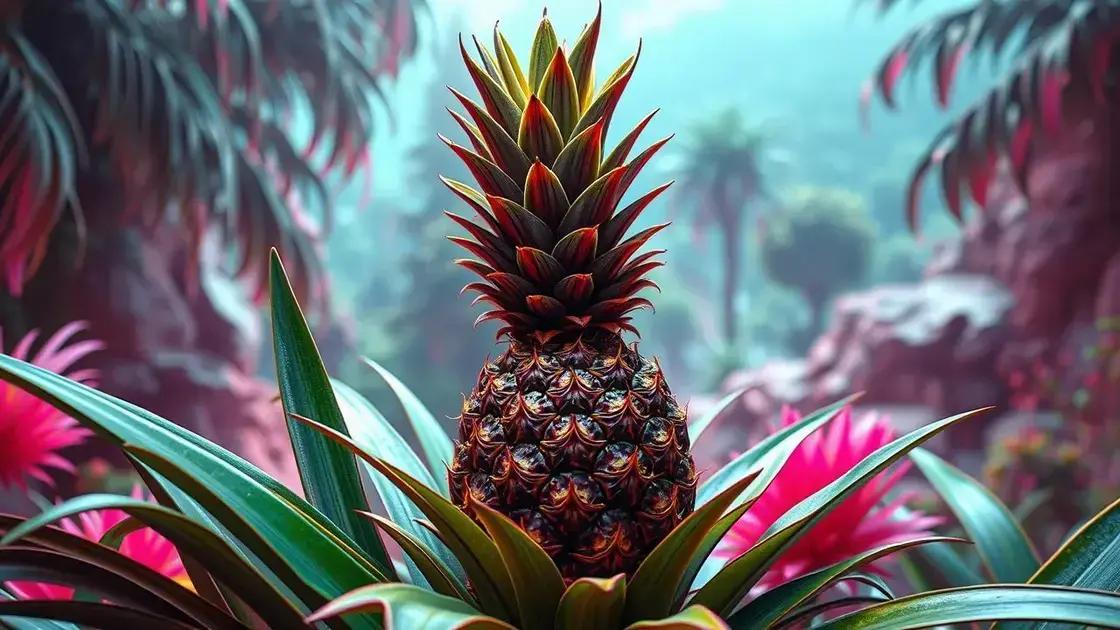How to Care for a Pineapple Plant: 5 Essential Tips for Success
How to care for a pineapple plant effectively can seem complicated at first. However, with the right approach, you can enjoy a thriving pineapple plant that adds beauty to your space while also offering delicious fruit. From understanding sunlight requirements to mastering watering techniques, this guide will provide you with the essential tools you need to nurture your pineapple plant successfully.
Table of Contents
ToggleUnderstanding the sunlight needs for your pineapple plant
Understanding the sunlight needs for your pineapple plant is essential for its growth and development. These tropical plants thrive best when given proper sunlight conditions, which directly influences their health and fruit production.
Optimal sunlight exposure
Pineapple plants need plenty of bright, indirect sunlight to flourish. Here’s what you should consider:
- 6 to 8 hours of sunlight each day is ideal.
- Avoid direct harsh sunlight during the hottest part of the day to prevent leaf scorch.
- Rotate your pineapple plant regularly to ensure even growth and exposure.
Signs of insufficient sunlight
If your pineapple plant is not getting enough light, it may exhibit certain symptoms:
- Leggy growth with elongated leaves.
- Pale or yellowing leaves.
- Slow or stunted growth.
Tips for managing sunlight indoors
When growing pineapples indoors, it’s essential to maximize their sunlight access. Here are some tips:
- Place your pineapple plant near a south-facing window.
- Use grow lights if natural light is insufficient, especially in winter.
- Consider using sheer curtains to diffuse harsh sunlight.
Additionally, you can learn more about exploring indoor gardening techniques to provide the best environment for your pineapple plant.
Conclusion
Understanding and fulfilling your pineapple plant’s sunlight needs will help you achieve a healthy and productive plant. By following these guidelines, you set the stage for successful pineapple cultivation.
Water requirements and growth stages of pineapples

Water requirements and growth stages of pineapples are crucial for ensuring a healthy plant and maximizing fruit yield. Understanding how much water your pineapple plant needs at each stage of its development will help you achieve success.
Watering needs during the different growth stages
Pineapple plants have varying water requirements as they progress through their growth stages:
- Initial stage: During the first few weeks after planting, keep the soil consistently moist but not soggy.
- Vegetative stage: Water regularly and ensure adequate drainage. Aim for about 1 to 2 inches of water per week.
- Flowering stage: Reduce watering slightly to encourage fruit set, ensuring the plant does not dry out completely.
- Maturing stage: Water less as the plant matures, but continue to check soil moisture to avoid stress.
Signs of overwatering and underwatering
Recognizing the symptoms of improper watering is key:
- Overwatering: Yellowing leaves, wilting, and root rot.
- Underwatering: Browning leaf edges, crispy leaves, and slow growth.
Best practices for watering pineapple plants
To ensure proper hydration for your pineapple plant, consider these best practices:
- Always check the soil moisture before watering; use your finger to test.
- Water in the morning to reduce evaporation losses.
- Use well-draining soil to prevent water accumulation.
For more tips on nurturing your plants, visit exploring indoor gardening techniques.
Conclusion
Understanding the water requirements and growth stages of pineapples will help you keep your plant healthy and productive. By adhering to a proper watering schedule and recognizing the signs of water needs, you can cultivate a robust pineapple plant.
Fertilization tips for healthy pineapple growth
Fertilization tips for healthy pineapple growth are key to achieving vibrant plants and juicy fruit. By supplying the right nutrients, you can significantly enhance the growth and overall health of your pineapple plant.
Understanding nutrient needs
Pineapple plants require a balanced diet of essential nutrients, including:
- Nitrogen: Promotes leaf growth, which is vital for photosynthesis.
- Phosphorus: Encourages strong root systems and flower development.
- Potassium: Enhances fruit quality and resistance to diseases.
When to fertilize your pineapple plant
The timing of fertilization can impact the plant’s growth stages:
- First few months: Fertilize lightly every 4-6 weeks to establish strong roots.
- Vegetative growth: Increase fertilization frequency to every 2-4 weeks for robust leaf development.
- Pre-flowering stage: Reduce nitrogen and focus on phosphorus and potassium to encourage fruiting.
Best types of fertilizer
Choosing the right fertilizer is essential:
- Organic options like compost or well-rotted manure provide slow-release nutrients.
- Water-soluble fertilizers can boost nutrient uptake quickly.
- Slow-release granular fertilizers are effective for long-term feeding.
For additional insights, consider exploring indoor gardening techniques that can support your fertilization approach.
Common fertilization mistakes to avoid
Ensure your pineapple plant thrives by avoiding these common pitfalls:
- Over-fertilization: Can lead to nutrient burn and damage.
- Ignoring water needs: Watering affects how nutrients are absorbed.
- Using the wrong fertilizer: Always read labels to match the specific needs of your plant.
With the right fertilization strategies in place, you can look forward to a thriving pineapple plant ready to produce delicious fruit.
In conclusion
Caring for a pineapple plant requires attention to several key factors, including sunlight, watering, and fertilization. By understanding the specific needs of your pineapple at each growth stage, you can nurture a healthy plant that yields delicious fruit. Remember that optimizing the conditions for your pineapple plant, such as ensuring proper light exposure and appropriate watering practices, plays a significant role in its success. For further insights and tips on enhancing your indoor garden, explore additional resources that can support your gardening journey.

